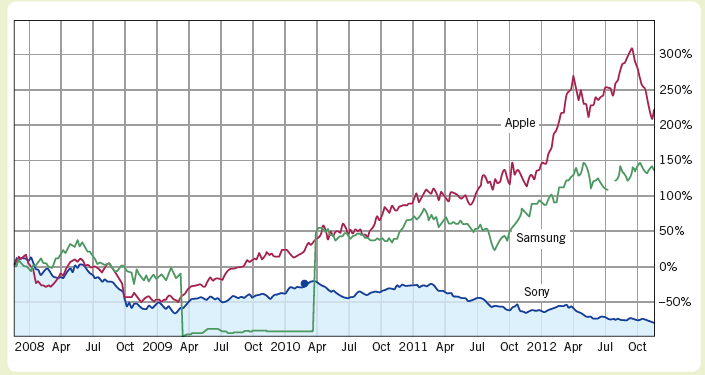1. Assess the pros and cons of Hirais structural changes. 2. What other initiatives beyond structural change...
Question:
2. What other initiatives beyond structural change might be necessary in order to create €˜One Sony€™?
Kazuo Hirai€™s April 2012 appointment as Chief Executive Officer of Sony Corporation would probably have surprised his younger self. After all, Hirai had started out as Japanese translator to the American hip-hop band the Beastie Boys. He had then become a video games designer and later led Sony€™s PlayStation business in the USA. However, by the time he finally became CEO at the age of 51, Sony was in deep trouble. One of Hirai€™s first moves was to change Sony€™s organisational structure. The aim was to create a more integrated business €“ €˜One Sony€™. With some adjustments over time, Sony retained this basic structure to at least until 2016.
Business background
Sony€™s businesses spanned professional electronics such as semiconductors and medical devices, consumer electronics from televisions and mobile phones to computers and the PlayStation, together with €˜content€™ businesses such as movies and music. As such, Sony was pitching against companies like the American success-story Apple and the Korean high-technology giant Samsung. Despite a proud history associated with such brands as the Sony Walkman audio devices or Sony Trinitron televisions, Sony was being left far behind. By 2012, Sony€™s stock price was less than half it had been five years before, while Apple and Samsung were two or three times as valuable (see Figure 1 ).
Sony€™s relative decline has not been for want of trying. In 2003, the company had suffered the so-called €˜Sony shock€™, when both earnings and stock price had plunged simultaneously following a weak response to cheaper Asian electronics firms. The company reduced costs by cutting its workforce by nearly 20 per cent. In 2005, Sony had taken the then-revolutionary step of appointing its first foreigner as CEO, Howard Stringer, a Welsh-American with a background in the music and movie business. Stringer had announced that he would break down the company€™s vertical management system, which he described as a set of separate €˜silos€™ with little coherence. He sought
Figure 1

to integrate the company€™s hardware business, based in Japan, with its various content businesses, led by music and movies in the USA. Stringer€™s slogan had been €˜Sony United€™. But Stringer had been neither an engineer nor a Japanese speaker. It was reported that many of his diktats to the Japanese hardware businesses were largely ignored. The financial results for 2011€“12 confirmed Stringer€™s failure. Without a striking new product to compare with the original Walkman or Trinitron and still heavily reliant on an expensive Japanese manufacturing base, Sony€™s sales were down nearly ten per cent while profits were negative. The 69-year-old Stringer became Company Chairman. Hirai, Sony€™s youngest ever CEO and the second non-engineer in a row, set to work.
New strategy and new structure
Hirai insisted that the new Sony would be focused predominantly on five key strategic initiatives. First of all was a strengthening of the core business, by which he meant digital imaging, games and mobile devices, including phones, tablets and laptops. Second, Hirai committed himself to returning the television business back to profitability, after eight years of consistent losses. Third, Sony would develop faster in emerging markets such as India and South America. The fourth initiative was to accelerate innovation, particularly by integrating product areas. Finally, Sony was preparing to realign its business portfolio, with divestments expected of non-core businesses (e.g. the legacy chemicals business).......
CorporationA Corporation is a legal form of business that is separate from its owner. In other words, a corporation is a business or organization formed by a group of people, and its right and liabilities separate from those of the individuals involved. It may...
Step by Step Answer:

Exploring Strategy Text and Cases
ISBN: 978-1292145129
11th Edition
Authors: Gerry Johnson, Richard Whittington, Patrick RegnÈr, Kevan Scholes, Duncan Angwin





